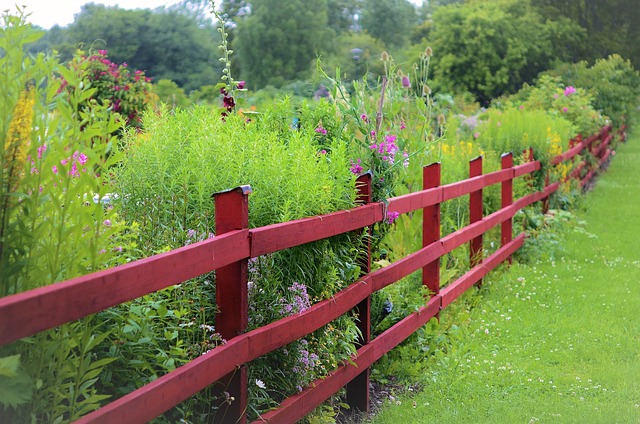Maximize Your Space, Minimize Your Budget: Cost-Effective Fencing Solutions for Large Properties
Managing a vast property presents unique fencing challenges. This article explores affordable solutions tailored to large-scale needs. We delve into understanding the specific requirements of expansive landscapes, from privacy and security concerns to aesthetic considerations. By examining budget-friendly material options, offering design ideas that maximize both functionality and affordability, and providing expert installation tips, we empower homeowners to create durable, cost-effective fences that enhance their properties without breaking the bank.
- Understanding Fencing Needs for Large Properties
- Exploring Budget-Friendly Material Options
- Design Ideas for Efficient and Affordable Fences
- Installation Tips to Save Costs Long-Term
Understanding Fencing Needs for Large Properties
When it comes to large properties, understanding fencing needs is key. These expansive areas often require fences that can withstand various challenges, from high winds and extreme weather conditions to providing robust security and privacy. The primary considerations include the length of the perimeter to be fenced, terrain elevation, and the level of security or aesthetic appeal desired.
Large properties might also host a variety of activities and have diverse landscape features. Some owners seek fences that blend seamlessly with the natural surroundings, while others prioritize functionality and durability. Additionally, privacy concerns vary widely, from providing shelter for livestock to ensuring seclusion for residential areas. Understanding these nuanced needs is essential in selecting cost-effective fencing solutions tailored to large property owners’ specific requirements.
Exploring Budget-Friendly Material Options
When considering fencing for large properties, cost-effectiveness is often a top priority. One way to achieve this is by exploring budget-friendly material options. Common choices include wood and vinyl, which are both readily available and relatively affordable compared to more exotic materials. Wood offers a natural, classic look that can enhance the overall aesthetic of your property, while vinyl fencing is low maintenance and resistant to rot and damage.
Additionally, new innovations in fencing materials have introduced composite options that combine the best qualities of wood and plastic, offering durability, resistance to decay, and a variety of colors and styles at competitive prices. These choices not only save on upfront costs but also reduce long-term maintenance expenses, making them an attractive option for large property owners looking to balance beauty and budget.
Design Ideas for Efficient and Affordable Fences
When considering fencing for large properties, cost-effectiveness should go hand in hand with aesthetics. Creative design ideas can transform your property boundaries into visually appealing features while keeping costs low. One popular and affordable option is natural-looking wooden fences made from sustainable materials. These can be tailored to any style, from rustic and traditional to modern and sleek, using various board sizes and finishes.
Another innovative approach is the use of recycled or reclaimed materials like old wine barrels or shipping containers. Transforming these into unique fence designs not only reduces costs but also adds character and a sense of sustainability to your property. Additionally, consider vertical gardening techniques by incorporating plants directly into the fence structure, providing both privacy and a lush green backdrop.
Installation Tips to Save Costs Long-Term
When installing a fence for your large property, there are several cost-saving tips to consider that will not only reduce initial expenses but also ensure long-term durability and effectiveness. One crucial aspect is proper planning and design. Taking the time to assess your land’s topography and layout can help you choose the most efficient fence type and placement, minimizing material waste and labor costs. For instance, if your property has natural boundaries like rivers or existing fences, incorporating these into your design could reduce the need for extensive new construction.
Another strategy is to opt for DIY installation whenever possible. While professional services might be tempting, especially for large projects, renting equipment and managing the process yourself can significantly lower expenses. Ensure you have the right tools and follow safety guidelines to avoid mistakes that may lead to costly repairs down the line. Additionally, choosing durable yet affordable materials like vinyl or wood treated for outdoor use can contribute to long-term savings by preventing premature replacements.
